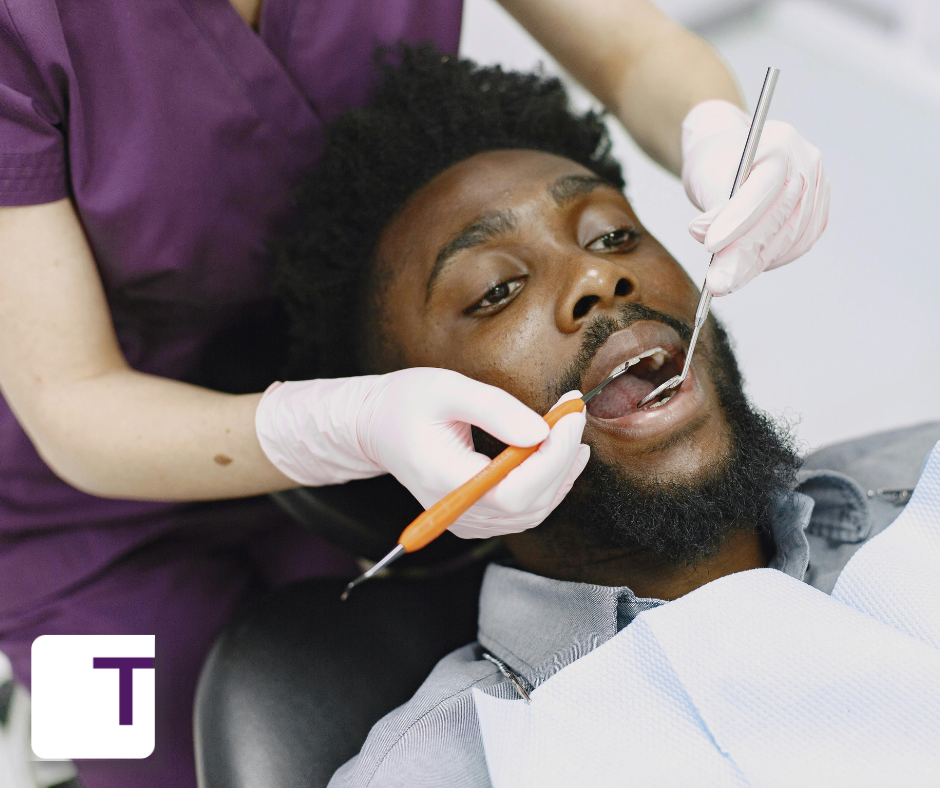Accurate diagnosis and strategic sequencing of hygiene care are essential in managing gingivitis and periodontal disease. Correct use of CDT codes, supported by thorough documentation, improves patient outcomes and ensures insurance compliance.
Understanding and Treating Gingivitis
The American Dental Association (ADA) defines gingivitis as inflammation of the gingiva without clinical attachment loss. It is characterized by:
- Redness and swelling
- Bleeding on probing
- Presence of plaque and calculus
- No radiographic evidence of bone loss
Gingivitis is reversible with professional care and improved home hygiene.
CDT Code D4346 – Scaling in presence of generalized moderate or severe gingival inflammation – full mouth, after oral evaluation The removal of plaque, calculus and stains from supra- and sub-gingival tooth surfaces when there is generalized moderate or severe gingival inflammation in the absence of periodontitis. It is indicated for patients who have swollen, inflamed gingiva, generalized suprabony pockets, and moderate to severe bleeding on probing. Should not be reported in conjunction with a prophy, periodontal maintenance or scaling and root planing. 1
Use this code for patients who exhibit generalized moderate-to-severe gingival inflammation but do not meet criteria for periodontitis.
Modern dental hygienists play a key role in systemic and oral health. By halting disease progression, they help patients live longer, healthier lives—not just through “cleanings,” but through disease remission and health advocacy.
Initial Visit and Documentation for Gingivitis (D4346)
For insurance reimbursement of D4346:
- Accompany with an exam code:
- D0150 – Comprehensive oral evaluation – new or established patient
- D0140 – Limited oral evaluation – problem focused
- Complete full periodontal charting
- Document generalized inflammation (across multiple teeth) and bleeding on probing
- Submit recent full-mouth or bitewing radiographs
Follow-Up Protocol (14–28 days later):
- Reassess gingival health. Complete a comprehensive periodontal evaluation.
- When there is no or localized gingival inflammation with no radiographic bone loss, perform D1110 – Prophylaxis – adult
- Continue if applicable
- Laser bacterial reduction (LBR)
- Scaling, polishing
- Reinforce importance of routine preventive care
- Homecare coaching and systemic health education
- Schedule next hygiene appointment in 4-6 months
If the moderate to severe gingival inflammation persists:
- Repeat D4346
- Schedule hygiene appointment for 6- week re-evaluation and appropriate care
- Refer patient to their primary care provider for a physical exam and blood panel, as persistent inflammation may indicate conditions such as undiagnosed diabetes
Note: When moderate to severe gingival inflammation without radiographic bone loss persists, you will continue gingivitis treatment until oral health stabilizes. Usually there is an underlying systemic condition and once the patient has a blood panel and exam by their PCP, the gingivitis will improve. Many diabetics go undiagnosed for 7 years and this is your opportunity to be a “first responder” in putting a halt to this disease.2
Managing Periodontal Disease
When inflammation is accompanied by:
- Probing depths ≥5mm
- Bleeding on probing
- Radiographic bone loss
…the patient likely has periodontitis, requiring scaling and root planing (SRP):
- D4341 – SRP, four or more teeth per quadrant
- D4342 – SRP, one to three teeth per quadrant
Initial Periodontal Visit
For patients presenting with urgent symptoms:
- Perform D0140 – Limited oral evaluation – problem focused
- Take full-mouth x-rays (if >2 years since last set)
- Laser bacterial reduction
- Ultrasonics full mouth
- Supra-scaling
- Homecare coaching and systemic health education
- Schedule for SRP and 4-6 week re-evaluation
If heavy calculus prevents charting or an exam:
- Perform D4355 – Full mouth debridement to enable comprehensive evaluation and diagnosis.
- Also use D0140 and a narrative (see below example)
- Include this narrative: “Heavy generalized supragingival and subgingival calculus present. Debridement is necessary to allow accurate periodontal charting and diagnosis.”
⚠️ Note: D4355 is not therapeutic—it’s preparatory for diagnosis. Once the debridement is complete, proceed with SRP.
Scaling and Root Planing Sequence
At the first SRP appointment:
- Complete D0180 – Comprehensive periodontal evaluation – new or established patient
- Bill insurance D0180 on the same day as the first D4341 or D4342 to establish a baseline
Note: After SRP has been performed submit D0180 annually. Many insurance plans will reimburse D0180 at a higher fee (Same fee as D0150) and will pay this fee at least every 3-5 years.
If using adjunctive laser therapy:
- When using laser periodontal therapy (or laser bacterial reduction) submit D4999 – Unspecified periodontal procedure
- Include narrative: “Laser therapy performed as adjunctive periodontal treatment to reduce bacterial load and promote healing.”
Remember: Even if not reimbursed, this service demonstrates clinical excellence and you will always bill insurance the services you have completed.
Final Phase I Visit: Re-Evaluation and Maintenance
4–6 weeks after completing SRP, the patient returns for re-evaluation and begins periodontal maintenance.
During this visit:
- Perform a comprehensive periodontal exam
- Repeat LBR (if applicable)
- Ultrasonics
- Scale as needed
- Polish
- Reinforce systemic health
- Review and update home care
- Schedule next hygiene visit (usually 3-4 months)
- Refer to a periodontist as needed
3- 4 Periodontal Maintenance Months Submit:
D4910 – Periodontal maintenance (regardless of insurance reimbursement)
🔁 Typical maintenance intervals: every 3 months (though patient response may vary)
By correctly sequencing treatment for gingivitis and periodontal disease, and using the appropriate CDT codes and documentation, dental teams can promote disease remission and patient health, support accurate insurance reimbursement, and establish long-term continuity of care.
References.
- ADA Guide to Reporting D4346. Read here.
- Estimating the Delay Between Onset and Diagnosis of Type 2 Diabetes From the Time Course of Retinopathy Prevalence. Massimo Porta, Giulia Curletto, et al.
Diabetes Care. June 2014; 37 (6): 1668–1674 DOI: 10.2337/dc132101

About the Author
Debbie Seidel-Bittke, RDH, BS is the founder of Dental Practice Solutions and a clinical dental hygienist with years of experience. As a hygiene department coach and frequent speaker at national dental conferences, she specializes in helping practices implement effective systems and a team-based approach to patient care. Debbie, a former assistant professor at USC School of Dentistry and hygiene department program director, is committed to improving hygiene departments and patient outcomes.
You can reach Debbie by email at debbie@dentalpracticesolutions.com, by phone at 623-252-1941, or by visiting her website at www.dentalpracticesolutions.com. Explore her courses for more on treating gingivitis and periodontitis here.
For Further Reading
This article is best understood alongside these two companion pieces by Debbie Seidel-Bittke, which offer deeper insight into the evolving philosophy of periodontal care:
- Treating Periodontal Disease: A Paradigm Shift, Part 1
- Treating Periodontal Disease: A Paradigm Shift, Part 2
Together, these resources support your role as a clinical advocate for oral-systemic health.

